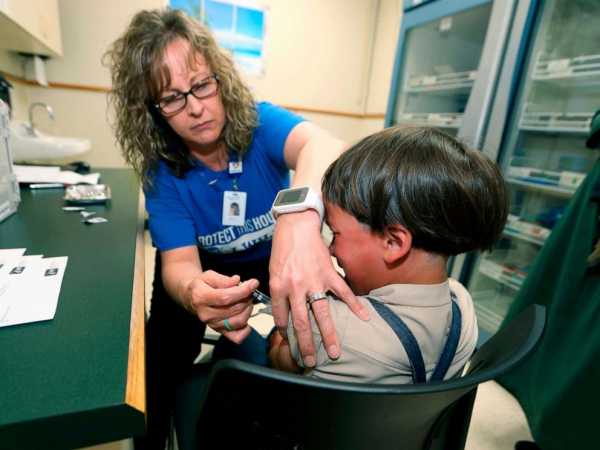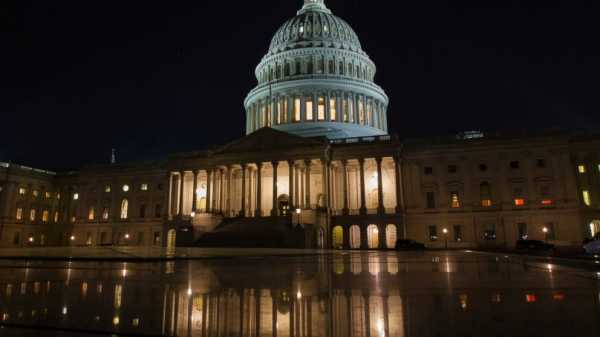
O’Leary said that in areas where the immunization rate is 95% or higher, “you could have an individual case in a school but it’s almost certainly not going to spread within the school.”

Paul Vernon/AP, FILE
A registered nurse and immunization outreach coordinator with the Knox County Health Department, administers a vaccination to Jonathan Detweiler, 6, at a facility in Mount Vernon, Ohio, May 17, 2019.
“If parents are living in communities with low vaccination rates, it’s certainly worth asking the school what the vaccination rate is,” he said.
(MORE: Low vaccination rates a big factor in ongoing measles outbreak )
Low vaccination rates were contributing factors in the earlier outbreaks this year. For example, data from Washington state’s Clark County showed that 76.5 percent of the county’s 5,680 kindergartners had complete immunizations in the 2017-2018 school year. That marked a significant drop in recent years. The county’s kindergartners had an immunization rate of 91.4 percent more than a decade ago.
Another step that school districts can take to reassure parents is to ensure that their schools have a school nurse.
Laurie Combe, the president of the National Association of School Nurses, pointed to the story of Mary Pappas, a school nurse in New York who was the one to first uncover the swine flu cluster in the state and alerted the Centers for Disease Control.
School nurses “can provide oversight of immunization compliance, they can remind parents that it’s time to receive the next vaccines,” Combe said.
In addition, in cases where parents are fearful of the vaccine or have encountered incorrect medical information, nurses who develop trusting relationships with parents can be invaluable in encouraging parents to vaccinate their kids.
“I think what we know about parents who are vaccine-hesitant is that trusting relationship is critical to them allowing their children to receive vaccines,” Combe said.
Sourse: abcnews.go.com






